 Do you remember the M6 closure due to a bus fire on 11 April? I do. I was held up for three hours in the traffic jam which ensued. So I emailed Highways England (HE) as follows:
Do you remember the M6 closure due to a bus fire on 11 April? I do. I was held up for three hours in the traffic jam which ensued. So I emailed Highways England (HE) as follows:
I was one of the drivers delayed by over three hours yesterday on the M6 southbound between Congleton and Sandbach due to the bus fire. What I don’t understand, or appreciate, is the lack of communication which could have prevented me joining the motorway in the first place, thereby adding to your problems and ruining my day.
At the point of entry (Junction 17) at about 11.15 there was no warning of the congestion ahead and traffic had not backed up to that point to give me a visual clue. As soon as I joined the carriageway I met the congestion. I counted two overhead message boards during my journey which were both blank.
 They could have informed drivers of an estimated delay time, diversion arrangements or the fact that all traffic would be leaving the motorway at the next junction. This latter arrangement was not signed at all – drivers were just left to see it for themselves. Much lane changing was the result of drivers guessing what was happening.
They could have informed drivers of an estimated delay time, diversion arrangements or the fact that all traffic would be leaving the motorway at the next junction. This latter arrangement was not signed at all – drivers were just left to see it for themselves. Much lane changing was the result of drivers guessing what was happening.
You let us down badly that day. And not for the first time. I regularly encounter situations on our motorways where information is inadequate or not provided. I appreciate that motorways are fast changing environments but you are supposed to be professional and competent in managing traffic. I remain to be convinced.
This was HE’s reply:
[May I] take a moment to explain a little about the type of signs that we set on the motorway network.
There are two roles fulfilled by the Variable Message Signs (VMS) in use on the Motorway Network; ’tactical signals’ that warn of incidents less than 5km (or two junctions) ahead of you, or ‘strategic signals’ that warn of issues beyond the range of tactical signals.
The tactical signals are set by the appropriate Regional Control Centre (RCC) based on information provided by the maintenance contractor, traffic officers on the ground, data feeds or from CCTV observations. These are the signs that warn of ‘Debris’ or ‘Workforce in the Road’; immediate dangers to the road user.
The strategic signals are set using pre-set signing plans by our National Traffic Information Centre (NTIC). The strategic signs are put in place to warn long-distance travellers that their chosen route may be compromised and giving these road users the opportunity to choose an alternative. They use a combination of pre-supplied plans from contractors and data from the RCCs.
These are set when the closure is confirmed from the roadside, as each closure is confirmed; signs are set for each closure.
We do not have any strategic VMS placed on slip roads or roundabouts prior to entering the motorway, so are unable to warn drivers that way. By the time you had entered at J17, it was ‘too late’ for the use of strategic warning signs as traffic was already committed to their route, and there was no alternative available. This was compounded by the fact that there are several VMS that are out of action between J17-J16 due to the ongoing Smart Motorways work (J16-J19). VMS closer to the incident were working, but were being used for safety-critical tactical messages, which were in place to help with queue control.
I replied asking why there are not strategic signs warning motorist at the point of entry. It seems contrary to everything Highways England purport to stand for to allow motorists to join a well established, lengthy traffic jam. The incident was one hour old when I joined the motorway.
This was HE’s further response:
The main reason that we cannot place VMS on motorway roundabouts or slip roads is that we are prohibited from doing so by the Department for Transport (DFT), due to the potential safety implications.
We do not want to place motorists in a position where they may decide to switch lanes on a busy roundabout at the last minute, or even turn around on a slip road – which has happened on occasion. This obviously raises several safety concerns. You may have noticed that at certain locations there are speed VMS just prior to joining the motorway, unfortunately this is the most we can do.
Another problem that we have is that in most cases, motorway roundabouts do not come under the jurisdiction of Highways England, instead being looked after by the local council. It is down to the local council to instal their own VMS on any appropriate feeder roads.
The M6 through Cheshire is now high on my list of motorways to avoid (joined by the M25 and most of the M1). And Highways England? Well I agree with Jeremy Clarkson.

 This was clearly a very topical subject locally – our meeting on 28 June had been advertised in the Congleton Chronicle, and we had 62 people there, of whom 22 were visitors, and so we had to do a quick shuffle to move out of the small side room at Astbury Village Hall into the main hall.
This was clearly a very topical subject locally – our meeting on 28 June had been advertised in the Congleton Chronicle, and we had 62 people there, of whom 22 were visitors, and so we had to do a quick shuffle to move out of the small side room at Astbury Village Hall into the main hall.
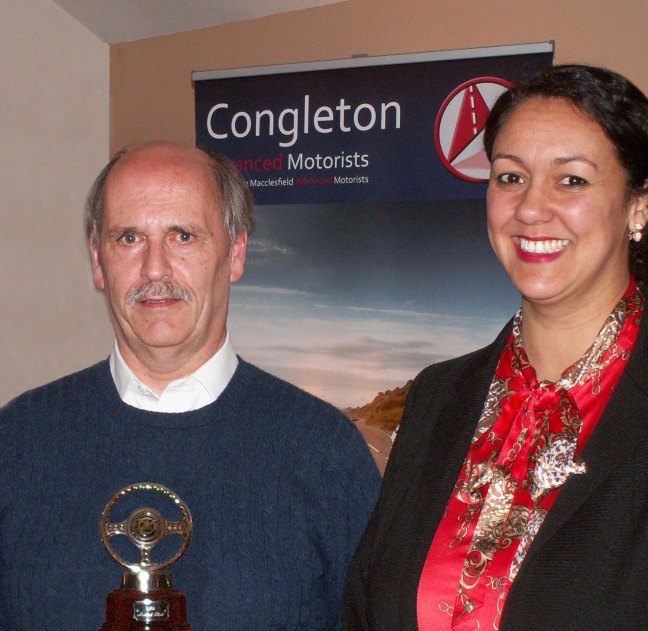


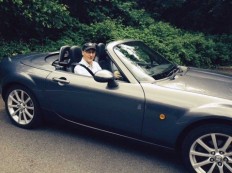 Linkages of controls.
Linkages of controls.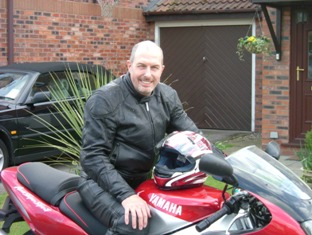 We have arranged a slow riding session on Sunday 30 April for group members, invited bike groups and friends. It will take place on the large car park at Bentley Motors, Pyms Lane, Crewe, starting at 10.00 am, and will last approximately 2 to 2½ hours.
We have arranged a slow riding session on Sunday 30 April for group members, invited bike groups and friends. It will take place on the large car park at Bentley Motors, Pyms Lane, Crewe, starting at 10.00 am, and will last approximately 2 to 2½ hours.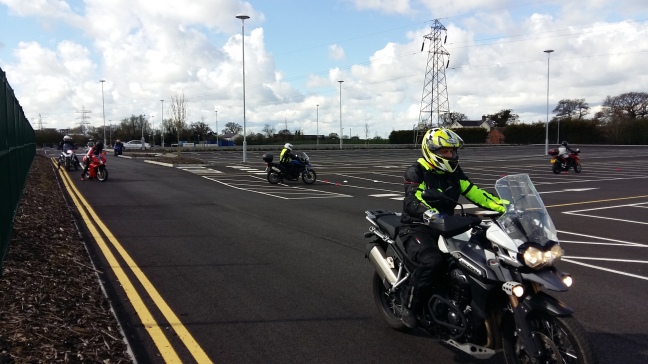




 Above the winter snow-line even the Spanish don’t maintain their road surfaces as well, so there was also some loose surface, but no UK-style potholes. Unfortunately, the pass was closed for repairs just before its highest point, blocking a key route out from Potes for us for the entire holiday and necessitating some major route re-planning by Graham.
Above the winter snow-line even the Spanish don’t maintain their road surfaces as well, so there was also some loose surface, but no UK-style potholes. Unfortunately, the pass was closed for repairs just before its highest point, blocking a key route out from Potes for us for the entire holiday and necessitating some major route re-planning by Graham.
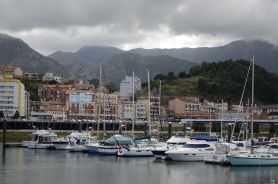

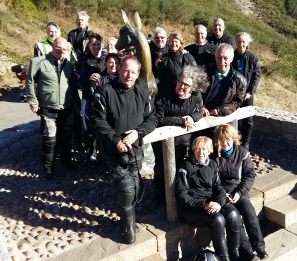 Add in the great company and banter and there was a great holiday. Thanks for the company of Graham ‘O Great Leader’ Board; Scott ‘Fruit Fly’ and Virginia Walker; ‘Top Gun’ Den and Andrea; Martin ‘Stephen Spielberg’ and Gill Barrett; Steve ‘Memory Man’ Gibson; Paul ‘Daddy Bear’ and daughter ‘Goldilocks’ Rogerson; Paul ‘Scouser’ and Gerry Burke; ‘Pistol’ Pete and Lin Maxwell; ‘Saxy’ Andy Homoky (he wishes…); ‘Gentleman’ John and Zoe Homoky; and Gerry ‘Waltzer’ Dodd and Joan.
Add in the great company and banter and there was a great holiday. Thanks for the company of Graham ‘O Great Leader’ Board; Scott ‘Fruit Fly’ and Virginia Walker; ‘Top Gun’ Den and Andrea; Martin ‘Stephen Spielberg’ and Gill Barrett; Steve ‘Memory Man’ Gibson; Paul ‘Daddy Bear’ and daughter ‘Goldilocks’ Rogerson; Paul ‘Scouser’ and Gerry Burke; ‘Pistol’ Pete and Lin Maxwell; ‘Saxy’ Andy Homoky (he wishes…); ‘Gentleman’ John and Zoe Homoky; and Gerry ‘Waltzer’ Dodd and Joan. ‘I’ve learned that what has a good beginning needs also a good ending‘
‘I’ve learned that what has a good beginning needs also a good ending‘ 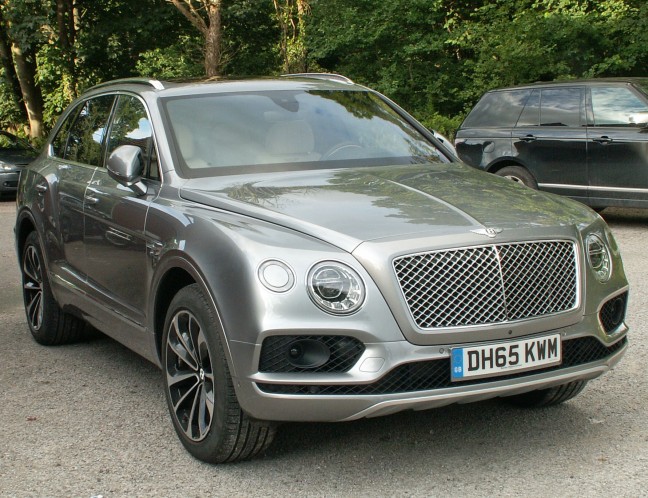 On Wednesday 22 June, our Group scored an IAM-wide ‘F1rst’ with a presentation by Bentley Motors of the marque’s history and the technology incorporated in modern luxury cars, together with an opportunity to view the Company’s new Bentayga SUV.
On Wednesday 22 June, our Group scored an IAM-wide ‘F1rst’ with a presentation by Bentley Motors of the marque’s history and the technology incorporated in modern luxury cars, together with an opportunity to view the Company’s new Bentayga SUV. Two items caught my attention in a newspaper this morning. My reason for buying the paper was to read about Chris Evans resigning from Top Gear.
Two items caught my attention in a newspaper this morning. My reason for buying the paper was to read about Chris Evans resigning from Top Gear.
